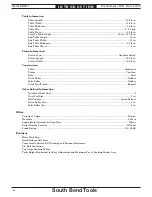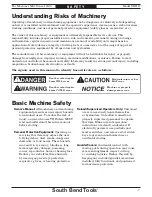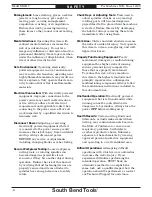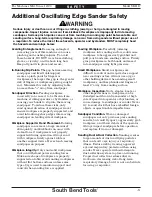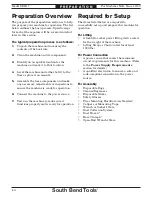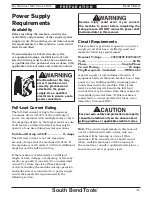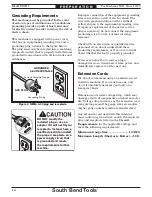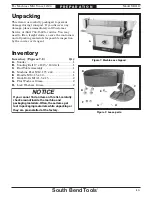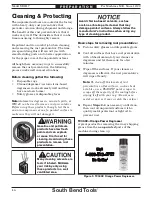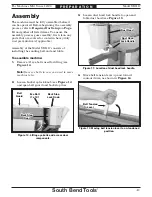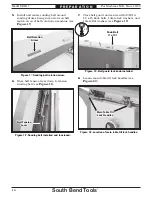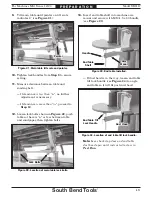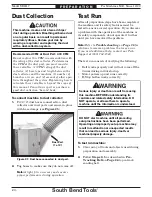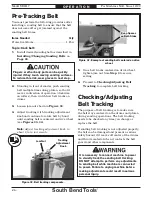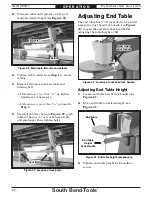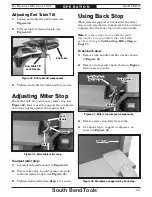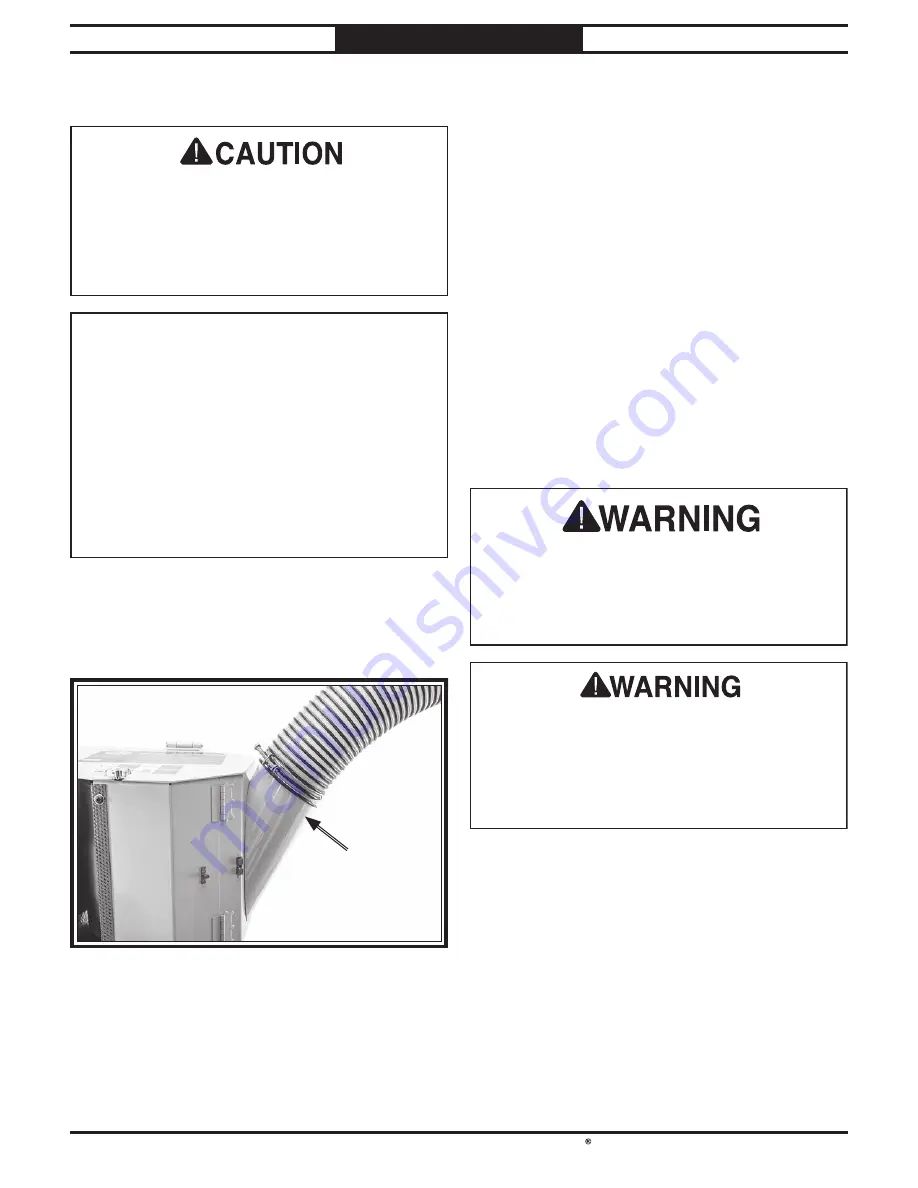
-20-
For Machines Mfd. Since 12/20
South Bend Tools
Model SB1117
P R E P A R A T I O N
Test Run
After all preparation steps have been completed,
the machine and its safety features must be
tested to ensure correct operation. If you discover
a problem with the operation of the machine or
its safety components, do not operate it further
until you have resolved the problem.
Note:
Refer to Troubleshooting on Page 36 for
solutions to common problems that may occur.
If you need additional help, contact our Tech
Support at (360) 734-1540.
Serious injury or death can result from using
this machine BEFORE understanding its
controls and related safety information. DO
NOT operate, or allow others to operate,
machine until the information is understood.
DO NOT start machine until all preceding
setup instructions have been performed.
Operating an improperly set up machine may
result in malfunction or unexpected results
that can lead to serious injury, death, or
machine/property damage.
The test run consists of verifying the following:
• Belt tracks properly and will not come off the
drums during initial startup.
• Motor powers up and runs correctly.
• E-Stop button works correctly.
Dust Collection
This machine creates a lot of wood chips/
dust during operation. Breathing airborne dust
on a regular basis can result in permanent
respiratory illness. Reduce your risk by
wearing a respirator and capturing the dust
with a dust-collection system.
Recommended CFM at Dust Port: 400 CFM
Do not confuse this CFM recommendation with
the rating of the dust collector. To determine
the CFM at the dust port, you must consider
these variables: (1) CFM rating of the dust
collector, (2) hose type and length between the
dust collector and the machine, (3) number of
branches or wyes, and (4) amount of other open
lines throughout the system. Explaining how to
calculate these variables is beyond the scope of
this manual. Consult an expert or purchase a
good dust collection "how-to" book.
To connect machine to dust collector:
1.
Fit (2) 4" dust hoses connected to a dust
collector over dust ports and secure in place
with hose clamps (see Figure 25).
2.
Tug hoses to make sure they do not come off.
Note:
A tight fit is necessary and ensures
proper performance during operation.
Figure
Figure 25. Dust hose connected to dust port.
. Dust hose connected to dust port.
Dust Port
Dust Port
(1 of 2)
(1 of 2)
To test run machine:
1.
Clear
away all tools and objects used during
preparation and assembly.
2.
Follow
Steps 2
–
5 as described in Pre-
Tracking Belt on Page 26 to pre-track
sanding belt.

